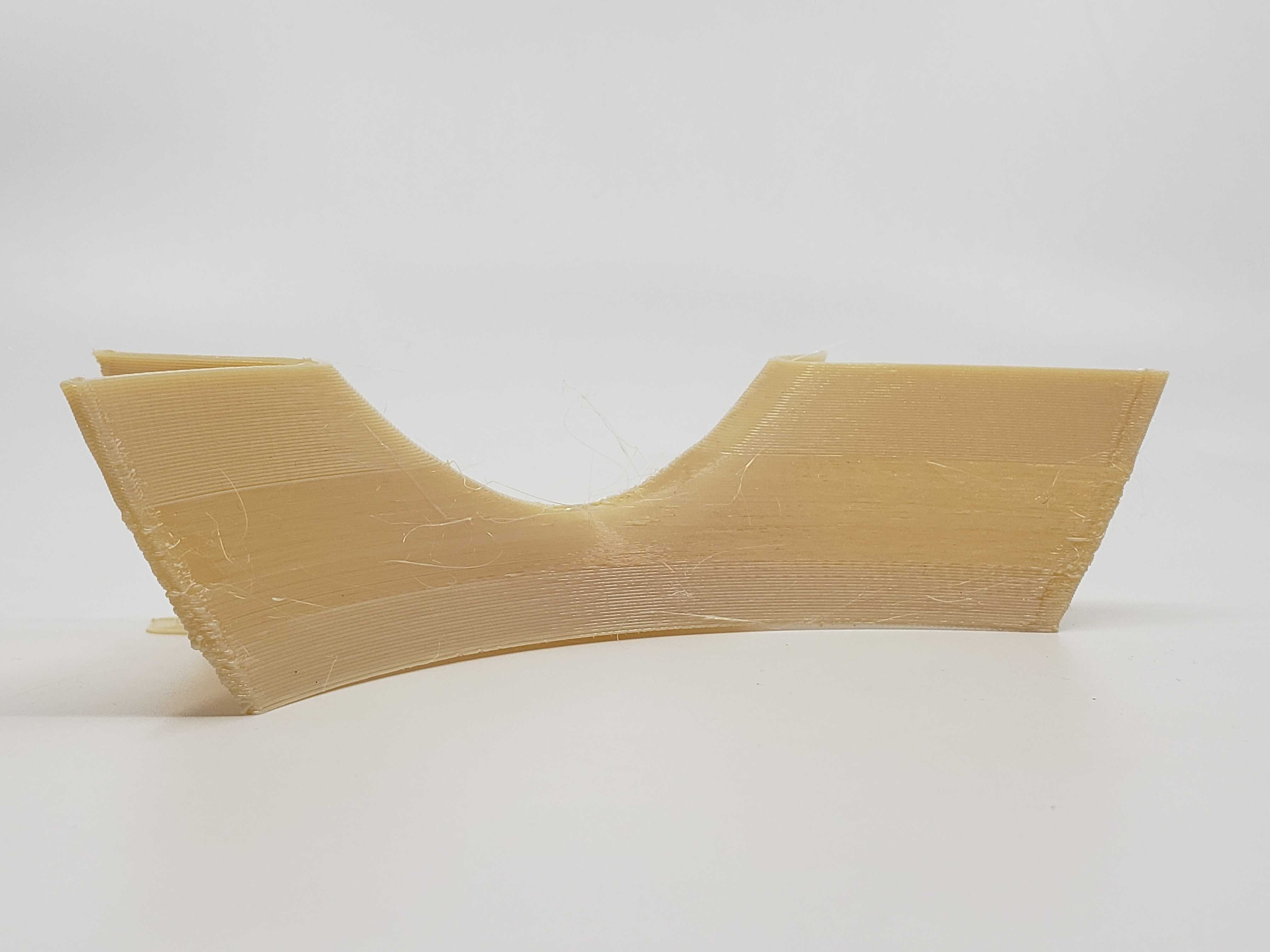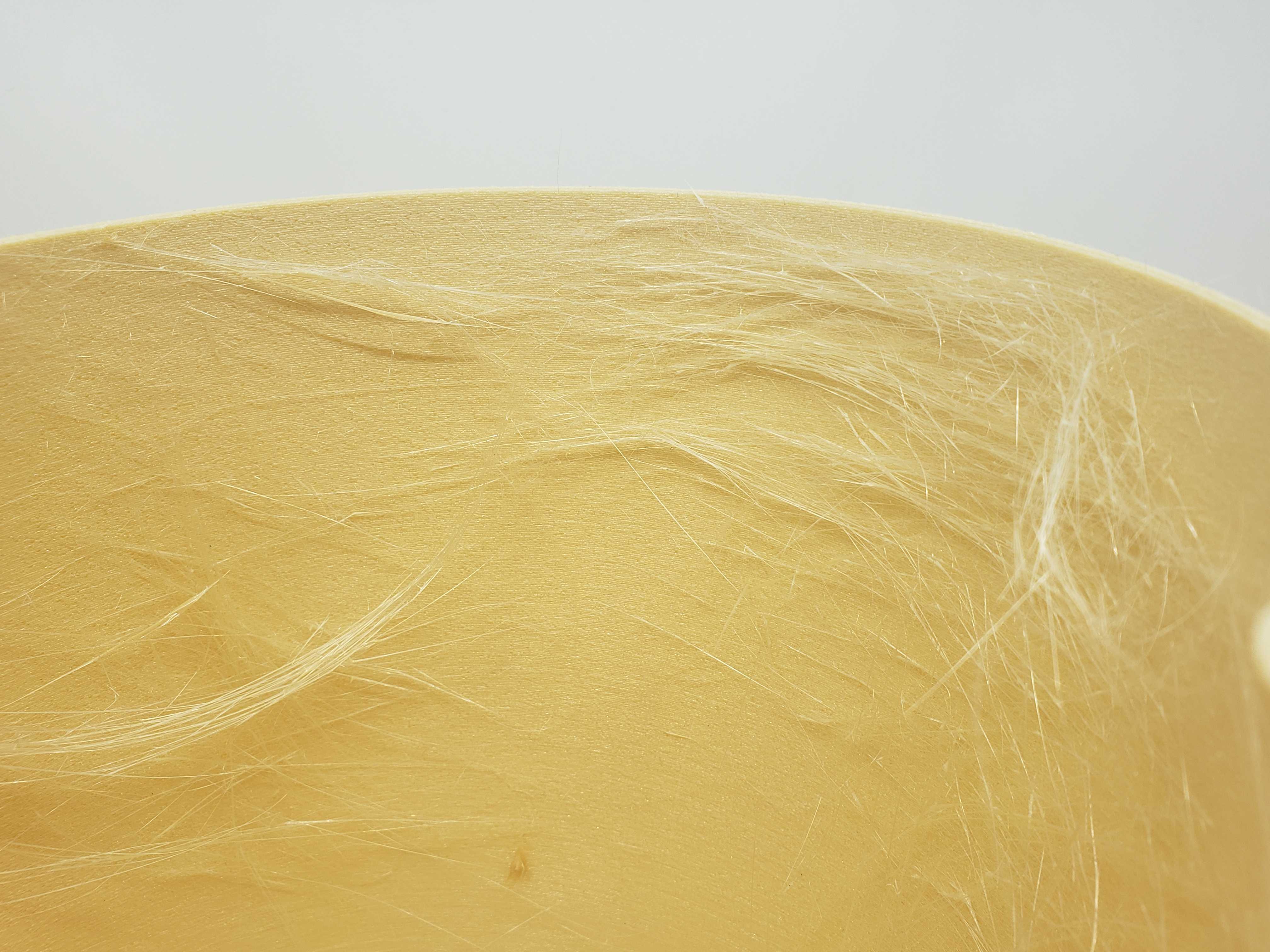AON3D Readyprint™ PEI-9085
AON3D Readyprint™ PEI-9085 is an amorphous polyetherimide (PEI) blend, commonly used in prototyping, tooling, and production parts. Produced from SABIC ULTEM™ 9085 resin, PEI-9085 filament offers long-term heat resistance and stability of physical and mechanical properties at elevated temperatures for extended periods.
Due to its heat resistance, high impact strength, high strength-to-weight ratio properties, and high resistance to abrasion PEI-9085 is widely used in aerospace, automotive, and military applications. It has the following certifications:
- Flame retardant and non-toxic – UL94 V0
- Railway fire and smoke standard EN45545
- Aerospace FAR 25.853 Standard
- Complies with the RoHS and REACH standard
Printing Difficulty: Challenging/Expert
Readyprint™ PEI-9085 can be purchased from AON3D directly by contacting help@aon3d.com.
- Moisture Control
- Build Platform Adhesion
- General Process Settings
- Post-Processing
- Troubleshooting & Best Practice
Moisture Control
Readyprint™ PEI-9085 is factory pre-dried and should be installed in the Filament Dry Storage and Feed System prior to printing to prevent moisture uptake and minimize the impact of moisture on the printing process. PEI 9085 is highly susceptible to hydration. Bubbles, popping noises, excessive oozing, rough texture, and stringing may occur if it has been hydrated.
Dry filament at 120ºC for 4-6 hours in a convection oven. Ensure drying equipment respects our site requirements to ensure adequate drying performance is achieved. Store filament in air-tight bags or containers alongside silica or zeolite desiccant. Be sure to replace desiccant regularly as its moisture capture ability is exhausted.
For more information, see the Filament Drying and Moisture Control page.
Build Platform Adhesion
For instructions on how to inspect the AON3D build plates, refer to the Inspect and Clean Build Plates procedure.
CF-PEEK Composite Plate
PEI-9085 prints well on the CF-PEEK composite plate although more care is needed to ensure good first layer adhesion. To improve adhesion of PEI 9085 on the CF-PEEK composite plate, reduce the First Layer Speed, increase the first layer extrusion temperature, or increase bed temperature.
PEI Build Sheet
PEI-9085 prints well on PEI film build sheet as it exhibits great adhesion behavior. Printing at high bed temperature (180°C) and/or extrusion temperature (~400°C) can lead to complete welding of PEI 9085 to the PEI build sheet. It is recommended to use Nano Polymer Adhesive to act as a release agent and prevent permanent welding of parts to the build surface. The PEI film is sensitive to Z offset calibration and thermal stability of the printer system. For best results, ensure that the machine has reached thermal equilibrium before calibrating. If the bed-to-nozzle distance is too small, or the first layer is too hot, the part may be difficult to remove without damaging the part and/or build sheet.
General Process Settings
For best results, process settings should be adjusted based on a particular model geometry. If you require process development support, our Applications Engineering team can help! Send us a message at help@aon3d.com to consult with one of our Additive Manufacturing Specialists.
| Setting | AON M2+ |
|---|---|
| Extrusion Temperature | 350-400ºC |
| Bed Temperature | 155-180ºC |
| Chamber Temperature | 135ºC |
| Print Speed | 40-100 mm/s |
| Nozzle Size | 0.25-1.20 mm |
| Preferred Build Platform | CF-PEEK Composite Plate |
Dual Extrusion and Support
To avoid clogging the nozzle, PEI-9085 should not be left idle at printing temperatures. In the provided profiles, the temperature of the hot end is reduced to 200ºC while idle.
For more information, see the Using Supports and Support Materials and Dual Extrusion page.
Thermax™ High Temperature Support (HTS2)
Thermax™ High Temperature Support (HTS2) is a compatible breakaway support material for Readyprint™ PEI-9085.
Infinite Material Solutions AquaSys® 180
Infinite Material Solutions AquaSys® 180 is a compatible soluble support material for Readyprint™ PEI-9085.
Note that AquaSys® 180 filament can withstand a maximum chamber temperature temperature of 120ºC before softening in the feed path. It is recommended to limit the size of Readyprint™ PEI-9085 parts and print one at a time when using AquaSys® 180 support to ensure good layer adhesion with the reduced chamber temperature.
Sample Slicer Profiles
SuperSlicer
All AON3D-validated materials are available in the SuperSlicer configuration bundle. Refer to SuperSlicer Installation and Update to install and update the SuperSlicer software. Follow the instructions to update to the latest version to ensure you have access to all available materials.
Simplify3D®
Simplify3D® sample profiles for Readyprint™ PEI-9085 are available in the Downloadable Assets section.
Post-Processing
Allow all machine components to reach room temperature before proceeding further. Failure to allow components to cool down will result in thermal injury (burns) to personnel.
Troubleshooting & Best Practice
High-Speed Printing
PEI-9085 is not well suited for high-speed printing. It can result in melt fracture and poor interlayer adhesion. PEI-9085 can be printed at tool speeds of up to 60 mm/s.
Key best practices to consider when selecting higher print speeds:
- Print speed above 50 mm/s induces significant stress in the deposited material, leading to an increased risk of warping and shrinkage under high-temperature service.
- Sharp corners, small holes, and other surface details begin to lose dimensional accuracy and resolution beyond 60 mm/s.
- Increased layer height is an effective alternative to high tool speeds to minimize print times while reducing overheating, residual stress, and underextrusion issues.
- Increased extrusion width or larger nozzle size selection are also effective means to reduce print time.
- At high deposition rates (elevated tool speed, layer height, or nozzle size), an increased extrusion temperature is also required to ensure consistent flow and adhesion of extruded material.
Color Changes
PEI-9085’s color is very susceptible to the flow rate and temperature. Changes in temperature, layer height, extrusion rate, or printing speed will result in change in color, although with little impact on the other properties.

Excessive Stringing
When hydrated, PEI-9085 printing produce excessive oozing, much like in the picture below.

Follow the drying procedure in the above Moisture Control section.
For more information, see the Filament Drying and Moisture Control page.
Rough Texture
When hydrated, PEI-9085 can produce a rough texture, much like in the picture below.

If the part is smooth for the first layers and eventually becomes rougher, this would mean that the material was initially dried, but dryness was not properly maintained throughout the print.
Follow the drying procedure in the above Moisture Control section.
For more information, see the Filament Drying and Moisture Control page.
Black Specks
PEI-9085 is prone to burning inside the nozzle and can produce black specks on the part, much like in the picture below.

Lowering the temperature and increasing the printing speed can improve the results.